CSPs
IMC 2020-Indian telecom stalwarts share their views at the inaugural

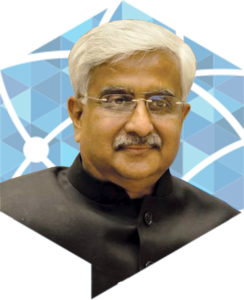 “Honorable Prime Minister of India; Honorable Union Minister for Communications, Electronics and IT, Law and Justice; Honorable Union Minister of State for Communications, Education, Electronics and IT; Mukesh Ambani, Chairman Reliance Industries; Sunil Bharti Mittal, Chairman Bharti Enterprises; distinguished delegates; esteemed guests and participants from India and abroad; friends from the media; ladies and gentlemen.
“Honorable Prime Minister of India; Honorable Union Minister for Communications, Electronics and IT, Law and Justice; Honorable Union Minister of State for Communications, Education, Electronics and IT; Mukesh Ambani, Chairman Reliance Industries; Sunil Bharti Mittal, Chairman Bharti Enterprises; distinguished delegates; esteemed guests and participants from India and abroad; friends from the media; ladies and gentlemen.
On behalf of DoT and COAI, it gives me great pleasure to welcome all of you for the India Mobile Congress 2020. This is the fourth India Mobile Congress and the first one being held virtually. We are blessed that this India Mobile Congress is being inaugurated with the address of the honorable prime minister of India, Shri Narendra Modi Ji. He has always been a source of inspiration and encouragement for the telecom sector to scale new heights toward achieving the objective of Digital India.
India Mobile Congress is the largest telecom technology event in South Asia. We are expecting nearly 160 exhibitors, more than 30 startups, and in the three-day event, 300 plus CXOs and 110 speakers. There will also be more than 30 conference sessions. The expected visitors will exceed 15000.
Though COVID 19 is a pandemic, the Indian telecom sector was able to demonstrate its strengths in dealing with this situation. Our networks did not fail us even for a single day. The massive data consumption surge was accommodated quite easily. All stakeholders in the telecom sector deserve full praise for this success.
The telecom sector provides the backbone for digital communication. It is a sector, which will shape our future, whether Industry 4.0, Machine to Machine communication, Internet of Things, Robotics, Artificial Intelligence, or Augmented and Virtual Reality, all such applications and technologies will ride on telecom.
IMC 2020 will provide the platform to showcase technology and innovation. There will be ample opportunity for networking and business, for dialogue on technology and policy and opportunity for startups to reach key decision makers.
The theme of IMC, Inclusive Innovation: Smart, Secure, Sustainable is very appropriate. Inclusive because we want to bridge the digital divide, the difference between the haves and the have nots, the rich and the poor, the rural and urban areas. Innovation, because the emphasis has to be on leveraging technology for new products, new processes, giving the consumer value for money, ease of living, and ease of doing business. The focus on Smart implies we want intelligent products and Security is all encompassing, whether for network or data or all communications. And all this must be Sustainable, meaning environment-friendly, it should utilize resources in an environment friendly manner and we must strive toward achieving the sustainable development goals.
We do look forward to an exciting 3 days of IMC. I again take this opportunity to welcome all of you.”
The spokesperson is Anshu Prakash, Chairman DCC and Secretary Telecommunications, Department of Telecommunications
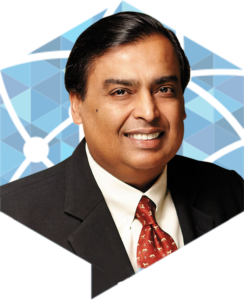 “In four short years, the Indian Mobile Congress has grown enormously in prestige and impact.
“In four short years, the Indian Mobile Congress has grown enormously in prestige and impact.
It has already earned a proud place in the annual calendar of global conversations on digital technologies.
This is because of India’s two unique strengths, which the world has now fully recognised.
One is the confluence of three Ds: India’s vibrant democracy, young demography, and digital transformation.
The other is the visionary and dynamic leadership of our Prime Minister Shri Narendra Modi ji.
Respected Pradhan Mantri ji, your Digital India Mission has made our country highly resilient in the face of the toughest of adversities.
The outbreak of COVID-19 posed life-threatening challenges. But our high-speed 4G connectivity infrastructure has proved to be India’s digital lifeline. Throughout 2020, India worked online, studied online, shopped online, received healthcare online, socialised online, played online… Simply put, India thrived online.
This underscores the phenomenal evolution of Digital Technology in India. From being a means of limited engagement and entertainment, it has evolved into a platform of unlimited enablement and empowerment.
Despite the lockdown, the entire industry consisting of thousands of engineers and employees worked round the clock to provide critical support 24X7 to all sections of society and business. The government supported the industry to go the extra-mile in keeping services going during this period. They deserve our appreciation and gratitude.
Honourable Prime Minister, with great admiration and enthusiasm, the nation has welcomed your announcement about the early availability of affordable COVID vaccine. The pandemic will surely be behind us soon in 2021.
Under your leadership, India will welcome the new decade with supreme confidence. The Indian economy will not only bounce back, but will also grow with unprecedented acceleration. India can, and India will prove cynics wrong by becoming a $5 trillion economy. It will be a more equal India with increased incomes, increased employment, and improved quality of life for 1 billion Indians at the middle and bottom of the economic pyramid.
India has the historic opportunity to become the world’s pre-eminent digital society with ease of living for all. My conviction comes from the enormous transformative power of the digital technologies.
Permit me, therefore, to briefly present four ideas for your consideration.
One. As many as 300 million mobile subscribers in India are still trapped in the 2G era. Urgent policy steps are needed to ensure that these underprivileged people have an affordable smartphone, so that they too can benefit from direct benefit transfer into their bank accounts, and actively participate in the digital economy.
Two. India is today among the best digitally connected nations in the world. In order to maintain this lead, policy steps are needed to accelerate early rollout of 5G, to make it affordable, and available everywhere.
I assure you that Jio will pioneer the 5G revolution in India in the second half of 2021. It will be powered by indigenous-developed network, hardware, and technology components. Jio’s 5G service will be a testimony to your inspiring vision of Atmanirbhar Bharat.
Three. I can say with utmost confidence that 5G will enable India to not only participate in the Fourth Industrial Revolution but also lead it.
Jio Platforms, with its family of over 20 start-up partners, has built world-class capabilities in Artificial Intelligence, Cloud Computing, Big Data, Machine Learning, Internet of Things, Blockchain, etc.
We are creating compelling home-grown solutions in education, healthcare, agriculture, infrastructure, financial services, and new commerce.
Each of these solutions, once proven in India, will be offered to the rest of the world to address global challenges.
Four. As the digitalisation of the Indian economy and Indian society picks up speed, the demand for digital hardware will grow enormously. We cannot rely on large-scale imports in this area of critical national need.
Thanks to Shri Ravi Shankar ji’s focused efforts, many leading global companies are coming to India to set up manufacturing facilities.
India has developed world-class strengths in chip design. I clearly foresee India becoming a major hub for state-of-the-art semiconductor industry.
When all the stakeholders work together, we can surely ensure that India’s success in hardware will match our success in software. We are about to step into a glorious decade of the India story, with the Digital India Mission playing the role of the principal accelerator.
Nothing can stop India’s rise, not even COVID-19.
This is our chance to create history.
Let’s do it! Let’s do it together, under the leadership of our Prime Minister!
I wish all of you the best of health and a Happy New Year in advance.”
The spokesperson is Mukesh Ambani, Chairman, Reliance Industries Limited
 “As I look forward to the participation of our Honorable Ministers, Shri Ravi Shanker Prasad Ji and Shri Sanjay Dhotre Ji, I am very eagerly looking forward to the address of our Honorable Prime Minister, Shri Narender Modi Ji who has been one of the moving forces behind creating a digital sensation, a digital wave, and digital awareness in our country.
“As I look forward to the participation of our Honorable Ministers, Shri Ravi Shanker Prasad Ji and Shri Sanjay Dhotre Ji, I am very eagerly looking forward to the address of our Honorable Prime Minister, Shri Narender Modi Ji who has been one of the moving forces behind creating a digital sensation, a digital wave, and digital awareness in our country.
We are all very blessed to have in him as our leader who understands the power of technology and the problems of the people across the country, especially in the far flung and rural areas and has put at the heart of India’s growth agenda, a Digital India mission.
We are all rallied by that clarion call of the Prime Minister and have been working endlessly and with great deal of resources and effort in fulfilling India’s dream of being a digitally savvy society.
The onset of the pandemic, that we have all been victims of around the globe, has actually accelerated the digital adoption of various products and services. We may not have been able to achieve many of the things that we have seen today, for several more years but the force multiplier of this pandemic has been in some sense a boon for the digitalization of our country.
I am very proud to be participating at IMC as one of the first private sector entrepreneurs in India when I entered the telecom industry in way back in 1981-82. I am really encouraged to see the strides that our country has made, from being one of long years of wait for a telephone connection, to now a mobile phone connection, a broadband connection available on tap, at most affordable prices to any and everybody.
As India takes important steps into the next generation of technologies, I am very pleased to say that Airtel is taking the lead in every sphere. Today, not only do we provide very vast 4G services across the country and are leaders in many parts of India, we are growing our businesses in every circle that is offering mobile services. We have also stepped up on our other businesses, fibre-to-the-home, the enterprise business, with the government agencies, the digital side, or partnering with the best global and Indian companies to provide product and services to our customers.
Fibre rollout has been extensive and we are excited about the prospects of joining hands with BharatNet to cover more and more of India to fibre connectivity. I am particularly very excited about the upcoming 5G which in the next 2-3 years will become the norm in the mobile broadband space. As the world settles down on the 5G space, pricing of equipment comes down, and importantly the devices become available in plentiful, India will be ready to receive the benefit on all the investment that the globe would have made into 5G standards and 5G ecosystem.
I am particularly excited about Bharti Enterprise’s entry into space, the next frontier of communications. Here again, our Prime Minister has shown tremendous foresight in putting out a consultation paper to invite the private sector into space industry, to launch, manufacture, and start satellite communications. And I am glad that we have taken an early call to partner with the British government.
I have no doubt that given India’s lead in the space industry and ISRO’s and DoS’ call to the private sector, we should start to see advantages moving in India’s favor in the space communications industry as well.
In closing, we are very excited to be part of the digital ecosystem, are contributing immensely to it, every person in Airtel and Bharti ecosystem is doing his very best to ensure that we accelerate the digital dream of India, serve our people in a truthful and meaningful way so that the absence of some of the physical infrastructure is mitigated by the digital infrastructure.”
The spokesperson is Sunil Bharti Mittal, Chairman, Bharti Enterprises
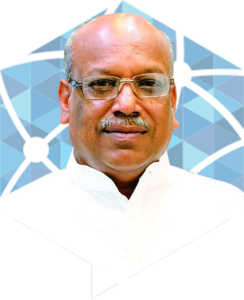 “It is important that we understand the role of telecom and technology in socio economic development of the nation.
“It is important that we understand the role of telecom and technology in socio economic development of the nation.
This year’s theme for IMC 2020: Inclusive Innovation-Smart, Secure, Sustainable sums up the prominence of the ICT sector’s role to make our nation resilient. Despite the surge in data traffic, throughout the lockdown period, the sector remained resilient and has enabled the nation to leapfrog its digital journey.
The government appreciates the role played by the TSPs in COVID-19.
Digital technologies are considered necessary instruments to improve the level of participation and engagement of citizens in societal activities. They offer the government the possibility to streamline and transform their communication processes and relationship with citizens, business and other non-government actors through multiple digital channels, and empower the citizens across the country.
India is at interesting juncture in the technology journey with advent of futuristic technology such as 5G, AI, IoT, data analytics, cloud, edge computing, open source, data security, blockchain, smart cities, among others.
The IMC Expo goes a long way in bringing together the industry, the government, the academia, and other ecosystem players on a common platform for deliberating, discussing, and displaying latest industry technology trends.”
The spokesperson is Sanjay Dhotre, Minister of State for Communications, Education, and Electronics & IT, Government of India
 Digital technology, communication tools and IT platforms, all have established their extraordinary worth during these challenging times of the pandemic. India was united, people were talking and meeting with digital technology- from mobile to fixed line to internet to IT and video conferencing. COVID had created a new opportunity. We in India had also to respond to these challenges At our end, we completely liberalized our WFH ecosystem and today 85 percent of India’s IT operations are being held not from regular office but work from home. We have further liberalized policies so that it is now possible to work from anywhere.
Digital technology, communication tools and IT platforms, all have established their extraordinary worth during these challenging times of the pandemic. India was united, people were talking and meeting with digital technology- from mobile to fixed line to internet to IT and video conferencing. COVID had created a new opportunity. We in India had also to respond to these challenges At our end, we completely liberalized our WFH ecosystem and today 85 percent of India’s IT operations are being held not from regular office but work from home. We have further liberalized policies so that it is now possible to work from anywhere.
We have articulated Digital India as designed to primarily bring in digital inclusion and COVID also gave an extraordinary opportunity to establish the inclusive character of Digital India and the far-reaching impact of communication and digital tools.
We linked digital identity to confirm the physical identity of 1.3 billion plus Indians to 1.2 billion mobile phones and 1.26 billion Aadhar cards. We sent welfare entitlement to poor people directly into 370 million bank accounts, which we opened. And it was the mobile apps that facilitated this.
I compliment all those who have worked on India’s communication system, India’s mobile telephone systems, India’s IT system, and all those who have been working to help people lead normal lives in spite of such great compulsions.
The India Mobile Congress being held digitally, needs to rejoice the extraordinary excellence shown by the digital platforms of the country and the entire world. This is a new milestone which is unfolding the extraordinary future. I am sure this new technology, whether 5G, new innovations, Artificial Intelligence, and IoT will work together to further create a favorable ecosystem, where the mobile phone at the center of all this creates further opportunities. Of course, we need to ensure that digital technology is safe. And sustainable so that common people have a stake in that process.
We, in the government too, are expanding the communication footprint. BharatNet is a transformative program and shall reach optical fiber to every gram panchayat of the 600,000 villages of India. The Broadband Mission will ensure broadband access to all villages by 2022.
We are also keen that India must be 5G-ready and for that testbeds have been created, the provision for that will be unfolded soon. Our startup movement has become the third biggest in the world.
Moving forward, we must encourage Innovation, Creation, and Empowerment of 5G process with good application of Indian human resources. We are also very keen that for our state-led entity, we must create good 4G process in which Indian innovators should also play an important part in developing all necessary tools for that.
We are not against FDI, or foreign innovative minds. FDI is already 100 percent automatic. The IT and communications sectors registered a 7 percent-plus growth rate and raised the highest FDI, even in the challenging times of COVID.
The government is equally keen that the safety and security of our country is maintained, while enabling an atmosphere that creates a robust 4G network, a precursor to the 5G network.
We are also very keen that India becomes a global hub for supply chains. Our recent policies and the enabling open atmosphere, coupled with the ease of doing business, are attracting global capital to India. It is evident from the success of the PIL, launched at the height of COVID, that it is attracting huge investment from giant mobile companies, that are setting up manufacturing facilities here. We are also promoting India to become a center of manufacture for electronic components and tools.
We urge innovators and manufacturers to come, tap, and explore the extraordinary enabling atmosphere in India. We invite them to manufacture in India, export from here, and earn good production linked incentives. And large companies are responding to us.
We are open to new technologies, be they AI, IoT, or ML. India offers good opportunities to make India a center of AI. And like Digital India, we stress that these developments ensure the inclusion and empowerment of the common man, be it in education, agriculture, or healthcare, while taking care that AI is not the monopoly of a just a few.
And it is these objectives that are behind the spectrum trading, spectrum sharing, right of way, and software product policies.”
The spokesperson is Ravi Shankar Prasad, Minister for Communications, Electronics & Information Technology ,and Law & Justice, Government of India
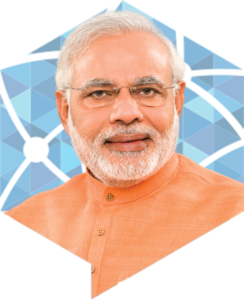 It gives me great pleasure in addressing IMC 2020. Here, we have a gathering of the brightest minds of the telecom sector. The group has all the key players from the sector that have played a critical role in the recent past and are expected to lead India to a more prosperous future.
It gives me great pleasure in addressing IMC 2020. Here, we have a gathering of the brightest minds of the telecom sector. The group has all the key players from the sector that have played a critical role in the recent past and are expected to lead India to a more prosperous future.
Even as we experience the rapid speed at which connectivity is improving, we also know that the acceleration has just begun. We have come a long way since the first-ever telephone call was made. In fact, even ten years back, it was difficult to imagine the kind of impact the mobile revolution would have on our country, society, and the world. And the future that lies ahead will make the present system appear primitive.
In this context, it is important to plan how with the upcoming technological revolution lives can be improved. Better healthcare, better education, better information & opportunities for our farmers, and better market access for small businesses are some of the goals we can work toward.
It is due to your innovation and efforts that the world continued to function in the pandemic. And families were connected to each other, schools held online classes, patients consulted doctors, and trade was unaffected. And that is the reason that the government is also working to unlock the full potential of the IT and telecom sector.
The new other service provider guidelines will help the Indian IT service industry achieve new heights. It will boost growth of this sector, even after the pandemic is long gone. This initiative will help to democratize the IT service industry and take it to the far corners of our country.
Today, we are in the era where mobile apps, which are a few years old are surpassing the value of companies, that have been present since decades. This is a good sign for India and our young innovators, who are working on many products, that have the potential to go global. A lot of young techies tell me that it is the code that makes a product special. Some entrepreneurs tell me, that it is the concept that matters the most. Investors suggest that it is capital, which is important to scale a product. But often, what matters the most is conviction. The youngsters have earned their products.
Sometimes, conviction is all that stands between just a profitable exit and making a unicorn. My message to my young friends is to have faith in their potential, as well as their products.
We are a country of over a billion-plus phone users, with a unique digital identity. We have over 750 million internet users. The speed and scale of the internet penetration can be seen by the following facts. Half of the total internet users in India were added in the last 4 years. And half of them are located in the rural parts of the country. Our digital size and our digital appetite are unprecedented.
We are a country where the tariffs are the lowest in the world. We are one of the fastest growing mobile app markets in the world. The digital potential of our nation is unparalleled. Perhaps, even in the history of mankind.
It is because of mobile technology that we are able to provide benefits worth billions of dollars to millions of Indians. And that we are able to help the poor and vulnerable effectively during the pandemic. And are also seeing billions of cashless transactions, which boost formalization and transparency. It is mobile technology that will enable smooth, contactless interface on toll booths. And enable us to embark on one of the world’s largest COVID-19 vaccination drive.
We have achieved much success in mobile manufacturing in India and are emerging as one of the most preferred manufacturing destinations. The production linked incentive scheme has been successful in promoting telecom equipment manufacturing. Let us work together to make India a global hub for telecom equipment design, development, and manufacturing.
We have embarked on a plan to ensure that over the next 3 years, every village has high-speed fibre optic connectivity. We have already linked the Andaman & Nicobar Islands with fibre optic cables. We are introducing programs that focus exclusively in places that can make the best out of such connectivity, like aspirational districts, left wing extremism, north eastern states, Lakshwadeep islands etc.
We are keen to ensure greater spread of fixed-line broadband connectivity and public wi-fi hotspots. With technological upgradation, we now have a culture of replacing handsets and gadgets frequently. Can the industry form a task force to think of a better way of handling the e-waste and create a circular economy?
This is just the beginning. The future holds great potential with the rapid technological progress. We need to work together, to ensure a timely roll-out of 5G to leapfrog into the future, and empower millions of Indians.
I hope that this conclave will ponder on all such matters and come out with fruitful outcomes that will take us forward in developing this critical infrastructure.”
The spokesperson is Narendra Modi, the Prime Minister of India
 Today on this day, a historic watershed event of such magnitude, dimension, and diversity has been launched. As a matter of fact, the interest generated for participation in this virtual event has far surpassed all predictions and is nearly equal to a physical event. I am sure that the experience for all participants will be much more personalized and superior to what could have happened in an equal physical event.
Today on this day, a historic watershed event of such magnitude, dimension, and diversity has been launched. As a matter of fact, the interest generated for participation in this virtual event has far surpassed all predictions and is nearly equal to a physical event. I am sure that the experience for all participants will be much more personalized and superior to what could have happened in an equal physical event.
The maiden participation of our Honourable Prime Minister, despite his busy schedule, in the greenfield IMC 2020 virtual underscores the importance of the telecom sector and the IMC in the scheme of things of the PM.
The Prime Minister’s inaugural address has been truly awe-inspiring, visionary, and path setting for all of us in the telecom industry. On behalf of COAI and its membership, I profusely thank Shri Narendra Modi Ji for his gracious indulgence and hope it continues year on year. Sir, we are committed to walk the visionary path shown by you.
I also thank Shri Ravi Shankar Prasad Ji, Minister for Communication, Electronics & Information Technology, Law and Justice for gracing the occasion and enlightening us with his forward looking thoughts about the telecom sector. Your encouragement and never say die attitude truly motivates us to strive to greater heights. Thank you very much, Sir.
My sincere thanks to Shri Sanjay Dhotre Ji, Union Minister of State for Communications, Education, Electronics & Information Technology for his vision and practical approach, which he logically articulated in his address. Thank you, Honorable Minister.
My heartfelt gratitude to Shri Anshu Prakash Ji, Chairman DCC and Secretary Telecom, DoT for not only delivering the welcome address but for always being a support and providing encouragement, and for planning and conducting IMC 2020 in its virtual avatar. Thank you, indeed.
That the telecom sector in India has reached glorious heights, despite constraints has been possible due to the visionary thought leadership and unstinted flawless execution capabilities provided by industry captains.
We are indeed privileged to hear the awe-inspiring and motivating talks of two of the greatest leaders in the field, Shri Sunil Bharti Mittal Ji, Chairman, Bharti Enterprise Limited & Shri Mukesh Ambani Ji, Chairman, Reliance Industries Limited. I reverently express my sincere thanks to both these distinguished personalities for sharing their views with us on issues of such contemporary importance. These thoughts will certainly propel the industry in speedily achieving the Honourable Prime Minister’s goals of Atmanirbhar Bharat, Digital India, Connected India, and Skill India with full enablement by and support of the telecom sector.
A very big thank you to all members and office bearers of COAI, to all of those attending, participating in this event, to all our well-wishers in government, industry, media, and academia to our Indian and foreign sponsors and partners, and to all those who made this possible with their encouragement, help, and support.
Finally, a big thank to the Team IMC for their hard and diligent work in making this inaugural and the event a possibility in these virtual times.”
The spokesperson is S P Kochhar, Director General, COAI
Thought Leadership Session
 As the principal sponsor of India Mobile Congress, it is my privilege to welcome you today to IMC 2020 in its new virtual form. The virtual nature of the event has allowed me to join you from home and it really shows the importance of connectivity.
As the principal sponsor of India Mobile Congress, it is my privilege to welcome you today to IMC 2020 in its new virtual form. The virtual nature of the event has allowed me to join you from home and it really shows the importance of connectivity.
The telecom sector in India and globally has provided the digital infrastructure that has allowed a lot of people in the nation to stay connected during the pandemic, and has allowed us to work from home digitally, without impacting productivity. A year ago, no one would have considered to organize a virtual IMC, but here we are, to gather again, to discuss and deliberate on important topics around inclusive innovation.
The Indian government’s Digital India platform with its focus on empowerment, inclusion, and digital transformation has its foundation on connectivity. And the mobile networks in India continue to deliver on that promise.
At Ericsson, we continue to stay close to our customers and help them provide the best network policy and connectivity to the Indian consumers. Ericsson has been in India for 120 years, since 1903. We have been partnering with our customers in India for the introduction of all mobile technologies, 2G, 3G, 4G, and now we are ready for the 5G journey. We have together experienced the massive adoption of 4G technology in India in recent years. 4G remains the dominant technology in 2020, accounting for 63 percent of mobile subscriptions.
India today has the highest average traffic per smartphone user, of 16 gigabits per month. The mobile consumption continues to increase, boosted by rapid adoption of 4G and people working from home during COVID-19. For example, the average time spent on mobile broadband has gone up by 2.2 hours per day in India during pandemic, against the world average of 1 hour only. We have this positive trend of high consumption in India and we cannot underestimate the importance of broadband and connectivity toward the social and economic development of the country. Our global studies show that, on average, a 10 percent increase in the mobile broadband ratio leads to a 0.8 percent increase in GDP. So, connectivity is good.
The telecom equipment that is supplied to Indian telecom service providers is made in India. In fact, we were the first to manufacture in India, and we started way back in 1994. We still do so in our Pune facility where we produce 4G and 5G equipment, radio equipment for the Indian market, of course, but we also export from Pune to other countries in Asia.
Ericsson was also the first to show and demonstrate 5G in 2017. During the last 3 years, 5G has risen very fast. We have installed 70 live 5G networks across the world.
The consumers in those networks are getting first-hand experience on the technology, better performance, ultra-high speed, and very reliable connectivity.
We are likely to find more transformative India relevant use cases where speed, latency, and security of the 5G network will be there.
Based on our technology leadership and experience in 5G deployment across the globe, at Ericsson, we are in a good position to support India on this 5G journey. We are ready to help our customers switch to 5G, whenever they are ready to do so. Basically, we are ready to go.
Networks are as important to the country as roads, electric grids, and airports. I strongly encourage India to prioritize actions to incentivize investments in digital infrastructure, including speeding up availability of spectrum, and making it more affordable. An encouraging policy framework will provide the enabling environment to help the Indian service providers make a seamless switch from 4G to 5G and help realize the Digital India vision.
Once again, I welcome you all to three exciting days of deliberations and discussions at India Mobile Congress.”
The spokesperson is Nunzio Mirtillo, Senior Vice President and Head of South East Asia, Oceania, & India, Ericsson
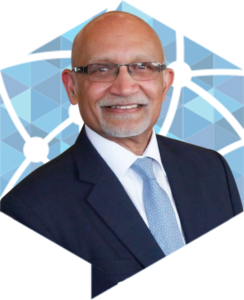 “This year has reinforced trends with respect to global supply chain realignment, new business models, disruption in industries and alternative way to working, all of which are strongly underscored in the critical role of technology. The government has played a vital role in encouraging the development of the digital economy to landmark programs and initiatives such as the National Broadband Mission, JAM, Digital India, National Digital Communications policy, and incentives under the Atmanirbhar Bharat program. These platforms have helped in fostering inclusion and enabling transformation.
“This year has reinforced trends with respect to global supply chain realignment, new business models, disruption in industries and alternative way to working, all of which are strongly underscored in the critical role of technology. The government has played a vital role in encouraging the development of the digital economy to landmark programs and initiatives such as the National Broadband Mission, JAM, Digital India, National Digital Communications policy, and incentives under the Atmanirbhar Bharat program. These platforms have helped in fostering inclusion and enabling transformation.
Digital services would be critical for future-ready India Inc. Powered by cloud connecting the front, middle ,and back office will ultimately drive, what we at KMPG refer to as, the connected enterprise.
With this background, i announce the launch of the report, KPMG in India Thought Leadership-TMT Industry CEO Outlook-Smart, Secure, Sustainable in association with the IMC and COAI. Our report shares the insights gathered through a survey of TMT industry CEOs on how the TMT industry is evolving in this extraordinary period of opportunities and challenges.
The research and surveys indicate that the outlook of the sector remains positive as 52 percent of the CEOs expressed their confidence in the overall growth prospects of the sector. The survey also indicated that 52 percent of the organizations have accelerated initiatives around digitization of their operations and creation of next generation operating models.
As an increasing number of businesses move towards digitizing their operating models, three prominent trends are emerging:
The pandemic has compelled businesses to transition to full or partial remote working environments. Several organizations expedited the implementation of digital initiatives that were staged for next 3 to 5 years;
Emerging technologies like IoT, Blockchain, and AI are projected to lead strategic investments with robotics and augmented reality-virtual reality emerging at the top. Businesses which delay embracing these technologies may run the risk of falling behind in terms of efficiency, productivity, and customer experience; and
While there could be some delay in the launch of 5G, considering the current COVID-19 situation, with an elongated 4G monetization period in a hypersensitive market, the country can potentially stand to benefit from a delayed adoption through the availability of more mature business use cases, numerous prototypes, and a collaborative environment to ensure profitable and sustainable 5G deployment on a large scale. With digital maturity come digital risks. A significant rise in the usage of digital tools from remote locations and constantly evolving geopolitical dynamics have stoked fears of threats to cybersecurity and data privacy. Investors, telcos, industry bodies, businesses, expert work groups, and government must come together to work on the implementation of challenges to advance India toward a smart, secure, and sustainable digital future.”
The spokesperson is Arun Kumar, Chairman and CEO, KPMG India
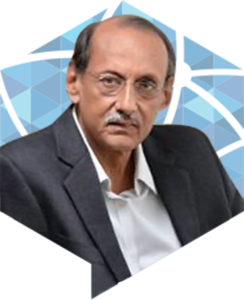 Completion of the 25 year milestone for mobile communication is a memorable occasion for many of us who have travelled this route together. Nearly two decades back, while the country was just starting this journey, our founder Chairman, Shri Dhirubhai Ambani had a vision that a phone call could be cheaper than a postcard, which was the most common form of communication then.
Completion of the 25 year milestone for mobile communication is a memorable occasion for many of us who have travelled this route together. Nearly two decades back, while the country was just starting this journey, our founder Chairman, Shri Dhirubhai Ambani had a vision that a phone call could be cheaper than a postcard, which was the most common form of communication then.
And with that vision we began our journey, introducing RIM-Reliance India Mobile, exactly 18 years ago. At Reliance Infocomm, we have a saying, Karlo Duniya Mutthi Mein. What was not said but surely implied was Karlo Duniya Sab Ki Mutthi Mein. A task we are pursuing relentlessly. And, with the introduction of 4G, we precisely mean Duniya-the broadband data services that bring the world wide web. This has not been a simple journey, of course, but by no means is it over.
2G was like boarding an aircraft, 2.5G pushback, 3G taxiing to runway and 4G take-off. The Udaan has just begun and we have to go high and far. We all understand where we need to go. Our destination is to realise the full potential of Digital India but accelerating the operationalization of cloud native services, IoT, Blockchain, AI, AR/VR and so on, and in delivering education, health, governance, and entertainment and more for an all-inclusive India.
During the past few months, the unprecedented pandemic has proved the need for an affordable broadband centric Digital Bharat. All of us understand the importance to accelerate the indigenous capabilities of 5G and other related technologies so as to deliver on supplier diversity and achieve the stated goal of Atmanirbhar Bharat.
Though India is number 1 in mobile data consumption, we are significantly behind as compared to other nations, be it on fixed line, fiber-to-home, 5G services, the type and size of cloud services and utilization, and so on.
We all know what needs to be done and this includes band and amount of spectrum needed, managing the cost of spectrum, simplifying the permissions, mitigating and removing RoW difficulties and cost, as well as allaying any radiation fears. all these have been discussed time and again, with limited progress. It is critical that we recognize data communications as an essential service, rest will fall in place automatically.
In 5G it’s not just about mobility, it is about ubiquitous high speed data through any transmission, technology, and media. Of course, 5G is also about related infrastructure, devices, and services. Twenty-five years back, we were far behind the developed world in the area of telecommunications. Today, we have made considerable progress, but are yet not where we need to be. Let us all collectively work together for India’s leadership in 5G and beyond.”
The spokesperson is Sanjay Mashruwala, Managing Director, Reliance Jio Infocomm
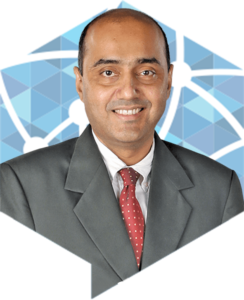 “In 2020, COVID has had a very significant impact on all our lives. In fact, India was the largest nation to put more than 1.3 billion people under a strict lockdown, besides the shock to the overall supply chain. Many millions were deeply affected from an economic point of view, causing stress on demand and consumption.
“In 2020, COVID has had a very significant impact on all our lives. In fact, India was the largest nation to put more than 1.3 billion people under a strict lockdown, besides the shock to the overall supply chain. Many millions were deeply affected from an economic point of view, causing stress on demand and consumption.
Through this crisis, the telecom industry was the backbone for India. Every one of us has been privileged to have played a part in keeping our customers connected in these uncertain times.
Now step back and imagine that there was no 4G, no digital networks. How could we have done this? What would have happened to education, to work, to payments, and more? This is truly the power of Digital India.
It is the same Digital India that has fundamentally changed our business at Airtel. Today, more than half of our business is online. 40 percent of our high value customer acquisitions happen online and are delivered straight to the home. Half of your complaints are resolved online. Every one of our one million retailers collect payment from our customers through our Mitra app. Over 50 million customers now use our payments bank to deposit or withdraw cash from their neighbourhood retailer and we have over 165 million users on our digital assets. So, our business today is both agile and being designed to make the customer omni channel.
But that’s not all, there is something more. That is the power of purpose. At Airtel, I have heard innumerable inspirational stories, where our teams have gone above and beyond the call of duty, to keep the nation connected during COVID. Our engineers set up networks, fixed faults, climbed towers braving floods and rains. In fact, our Knock, which had 1500 people, was operating with just 15.
Our broadband teams installed 2x the connections, as work from home grew, and each installation takes 3-4 hours. Our sales teams opened up 100,000 new stores, groceries, and chemists; our engineering and customer experience care teams declared a war on failure and identified root causes of the problems through daily stand-ups every morning at 9 am, seven days a week. Every one of these amazing people just did their jobs, no one forced them to do it and we did it because it was our purpose.
And it is this purpose that defines everyone at Airtel-to enrich the lives of every Indian by providing them an exceptional experience. And it is the same purpose that is enabling us to meet our customers where they are, and changing our business model dramatically.
Why is purpose important? For two reasons:
First, the massive opportunity. We believe that there is so much more to do to serve India better, to improve India’s productivity, and ensure every Indian benefits. The growth of our industry is uniquely positioned to deliver this through digital technologies and the partnerships we strike.
Second, the Digital India vision can be achieved only through a deep understanding of customers and the problems to solve for them. To do that, we have to be able to adapt the mindsets of our teams, build the right skills, and do it an agile way.
In short, we will deliver what India deserves, when we redefine our purpose to serve the needs of every Indian. And in so doing, reimagine our businesses to make that happen.
As a leading telecom player, we will play our part. But I believe there are three things if we have to truly deliver the vision of a Digital India. An India, where every Indian has the right to be connected, to be productive, to be educated regardless of where they live or who they know.
First, we must have an open ecosystem. In the technology world, standards are what make an ecosystem. Many years ago there was a fork in the road, on which technology to back-CDMA or GSM. GSM won, not because it was a better technology. In fact, CDMA was the better technology. But GSM won because it was the more accepted technology. More companies in the world embraced GSM and the rest is history. So, GSM won because it became part of the global ecosystem, and CDMA died! In much the same way, there is sometimes talk of India having its own 5G standards. This is an existential threat which could lock India out of a global ecosystem and slow down the pace of innovation. We would have let our citizens down if we allowed that to happen.
Second, we must create an open India ecosystem and promote applications development, for India and by India. For this, we have to come together. We have to set aside our differences and be part of one, the private sector, telcos, equipment players, device players; manufacturing companies, IT companies, everyone can benefit as the growth of technology makes us all more productive. We should collectively sign on to create a 5G ecosystem. And, if there is one thing that IMC can make happen, it is that.
Third, we must have enabling policies, that continue to keep the access to technology affordable. Affordable and easy access to layout fiber which are the nerves of a Digital India. Affordable spectrum that allows to invest in building networks that India deserves.
In conclusion, COVID has in many ways put the entire Digital India vision on steroids. If we can as a country, embrace the global standard, create an open ecosystem for India, and leverage this to reimagine our businesses, while having a predictable and simple policy environment, the entrepreneurial energy of Indians will deliver Digital India.”
The spokesperson is Gopal Vittal, Managing Director & Chief Executive Officer (India & South Asia), Bharti Airtel Limited
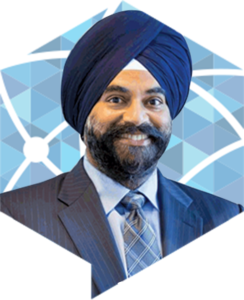 “This year, as we celebrate 25 years of mobile telephony in India and one which turned out to be transformational in many ways, underlining the critical role that telecommunications plays in the lives of people. With a billion mobile users, telecom became the lifeline of India, keeping the nation connected, the economic activities running during the biggest health crisis faced by humanity.
“This year, as we celebrate 25 years of mobile telephony in India and one which turned out to be transformational in many ways, underlining the critical role that telecommunications plays in the lives of people. With a billion mobile users, telecom became the lifeline of India, keeping the nation connected, the economic activities running during the biggest health crisis faced by humanity.
At Vodafone Idea, our network warriors, alongwith enhanced network capacities and contactless services ensured that our customers and businesses remain connected.
Today, India is the second largest telecom market in terms of subscribers and has the largest mobile data consumption globally. This has become possible due to massive private investment in the telecom sector over the last 25 years. The industry has the right structure, with four operators providing adequate competition and innovative services to Indians across the country.
The digital transformation in the country, over the last few years is built on the foundation of a ubiquitous broadband wireless network across cities, towns, and over half a million villages. And it would not have been possible without the vision of the Honorable Prime Minister and enabling government policies.
On our part, we have invested nearly USD 30 billion in India over the years and remain committed to be partners for Digital India.
We believe in enriching the lives of people with access to real time information, avenues for commerce, and enhanced quality of life. We have built the 5G ready network architecture and incorporated technologies to cater to the smart cities, smart machines, and smart citizens. From connected cars to connected devices for farmers in the agriculture heartland of India, we are using IoT and AI technologies to bring about a positive change in people’s lives across all socio-demographic segments. From automated factories to enabling work from home, online education, healthcare, e-commerce banking, gaming, and digital entertainment to driving financial literacy, woman safety and women empowerment, our GIGAnet is enabling businesses and individuals to stay ahead and thrive.
Looking ahead, we have two distinct opportunities and role for operators:
First, catalyzing India’s specific 5G use cases, creating innovative platforms and partnership models that will positively impact different industry verticals like healthcare, education, smart cities, among others.
Second, getting the bottom pyramid citizens to go digital, for ensuring inclusive growth.
The rural teledensity is just 59 percent versus 134 percent urban teledensity and nearly 450 million mobile users are not connected to broadband or do not own a smartphone.
We are prepared to address both these opportunities. Building on our strong network, IT, people capabilities, and customer connect, we intend to collaborate with existing ecosystem players and vibrant startups to drive this exciting future.
And there are some challenges, related to tariffs, taxes, levies, spectrum availability, and pricing too. The government understands these and has come up with the progressive National Digital Communications Policy. And now are driving the implementation of this policy.
I remain optimistic that with government support, the industry, and our company will script India’s success story over the next 25 years too.”
The spokesperson is Ravinder Takkar, Managing Director and Chief Executive Officer, Vodafone Idea Limited
 It is my pleasure to have you your esteemed presence at the 4th edition of the India Mobile Congress 2020 inaugural session. We are truly honored to host this eclectic mix of dignitaries from across the government, TMT industry and academia to deliberate, and discuss the roadmap of smart, secure, sustainable growth of TMT sector in the nation as a whole.
It is my pleasure to have you your esteemed presence at the 4th edition of the India Mobile Congress 2020 inaugural session. We are truly honored to host this eclectic mix of dignitaries from across the government, TMT industry and academia to deliberate, and discuss the roadmap of smart, secure, sustainable growth of TMT sector in the nation as a whole.
This special edition of IMC is being held virtually for the first time in the light of prevailing conditions. It has been a commendable achievement for us and it would be unfair if I do not offer my vote of thanks to the government, Department of Telecommunications, TRAI, COAI, our 170 sponsors, exhibitor partners, our speakers, our knowledge partner KPMG in India, our virtual partner Dreamcast, our experience marketing partner, George P Johnson, our IMC partners, USIBC, and IMC board for their support and for quickly adapting to the new reality of digital world and embracing the challenge of presenting Asia’s largest technology and communication event virtually.
We sincerely hope that you find the carefully curated agenda exciting, engaging, and relevant and are able to make the most of having the entire TMT industry from India and globally on one platform.
Thank you and enjoy the show!”
The spokesperson is P Ramakrishna, Chief Executive Officer, India Mobile Congress













